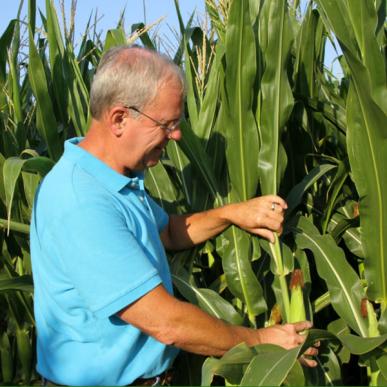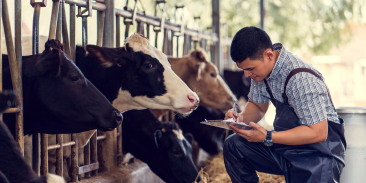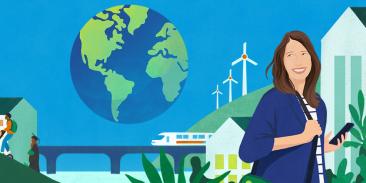Using the supply chain to slash fertilizer pollution
How we’re creating market demand for crops that improve air and water quality
What's the problem?
Although fertilizer is essential for producing food across the globe, crops take up on average only 40 percent of the nitrogen applied to them each growing season. The remainder can run off and pollute water and air. Runoff from row crops (corn, soy, wheat, etc.) can lead to algae blooms in lakes, rivers and the Gulf of Mexico.
This outgrowth of algae renders drinking water unsafe and kills countless fish, leading to 'dead zones' devoid of oxygen.
How can we improve the situation?
The best solution is the one that most efficiently solves the problem on a large scale, and provides incentives for businesses to become more sustainable.
We're doing this by increasing demand for grains grown using optimal fertilizer and best practices for soil health by addressing every point in the supply chain. Our goal is to change the way all grains are produced in the United States.

Technology now enables farmers like Len Corzine, of Illinois, to apply just the right amount of nitrogen fertilizer.
Example: We worked with Walmart, one of our largest corporate partners, to set aggressive greenhouse gas reduction goals.
One way the retailer is meeting this goal is by asking suppliers to cut emissions via better fertilizer use.
Walmart's enormous purchasing power makes it worthwhile for suppliers to comply. So far, over 20 food companies have committed to using fertilizer more efficiently on 34 million acres, and those commitments are yielding measurable changes.
Efforts like these to improve water quality, soil health and fertilizer efficiency create shared value throughout the supply chain, from grain buyers, to agribusiness companies, to farmers themselves.
Across more than 3.6 million acres of corn, EDF’s partnerships have:
- Reduced fertilizer loss, while maintaining or increasing crop yields.
- Improved soil health to reduce erosion and better replenish groundwater.
- Implemented conservation practices, such as cover crops, to help protect farms from the effects of extreme weather.
Thanks to new technologies and programs, farmers now have many different tools to help optimize their fertilizer use.
Act when it matters most
Every day more than 60 people sign up for news and alerts, to find out when their support helps most. Will you join them? (Read our privacy statement.)










